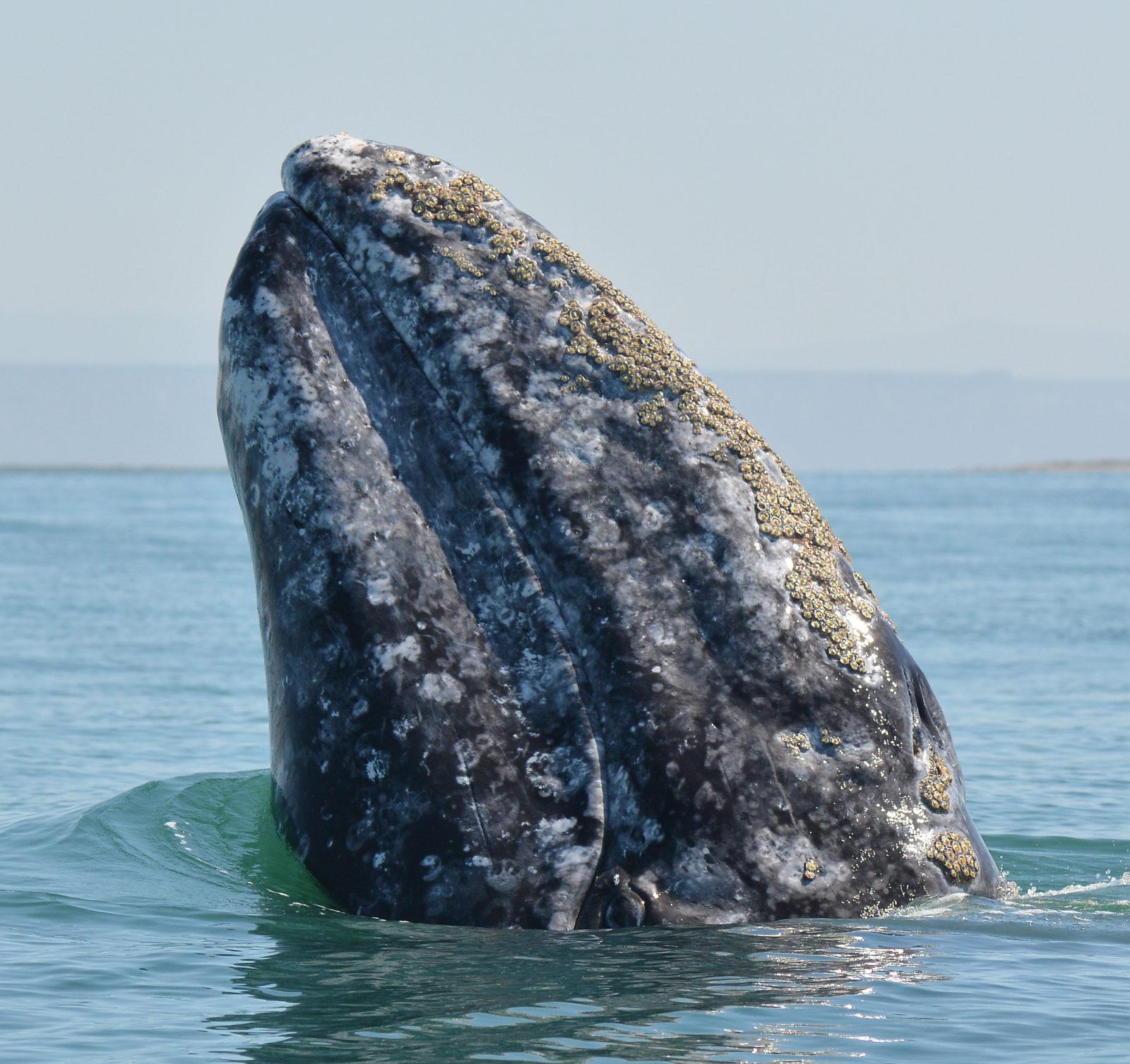Tour #1: Isla Santa Catalina and surroundings
Hello whalewatchers,
We had another great day with sunny skies and calm seas. The group went ashore on Isla Santa Catalina early and everyone loved the cactus. I went for a walk for some exercise and found a few things in bloom and plenty of greenery on the various shrubs. Upon returning there was alot of interest in a Krazy Koastal Kruise (with Kaptain Kenny or Kole) so we sent three skiffs out for some birdwatching and photography of the scenery. A few people also went for a snorkel.
We left the island and immediately found two blue whales–and a cow and calf pair of blue whales in the distance. We stayed with one of the individuals for awhile because it was fluking which is always a crowd=pleaser. We were able to get a good look at this whale and its flukes.
We decided to head west towards Isla Monserate with hopes of finding more whales and maybe a different species or two. We found four more blue whales and another one pleased us with its tail fluke. Two fluking blue whales in an afternoon–that was great!
We are headed to the Bahia Agua Verde area for the night and we will take it from there. Looks like good weather again tomorrow.
Capt Art
p.s. Photo by Val Shore. Thanks, Val! See you next year!















